Intel today unveiled its first dedicated graphics cards after years of development. These are the Intel Arc A-Series, which are aimed at laptops and are just the first members of a family that will soon grow in a big way.
Intel has already put the honey on our lips with its graphics cards for desktop PCs, but these will not arrive until the summer. The same will happen with the Intel Arc for more powerful laptops, so this is a remarkable landing, but it starts with the most modest versions.
Gaming at 1080p and 60 FPS is the guarantee of these graphics cards
The first Intel Arc graphics are included in the A-Series, which in turn has three large groups: Intel Arc 3, Intel Arc 4, and Intel Arc 7. The first laptops with Intel Arc 3 graphics are arriving today, but both Intel Arc 5 and 7 models will arrive in the summer.
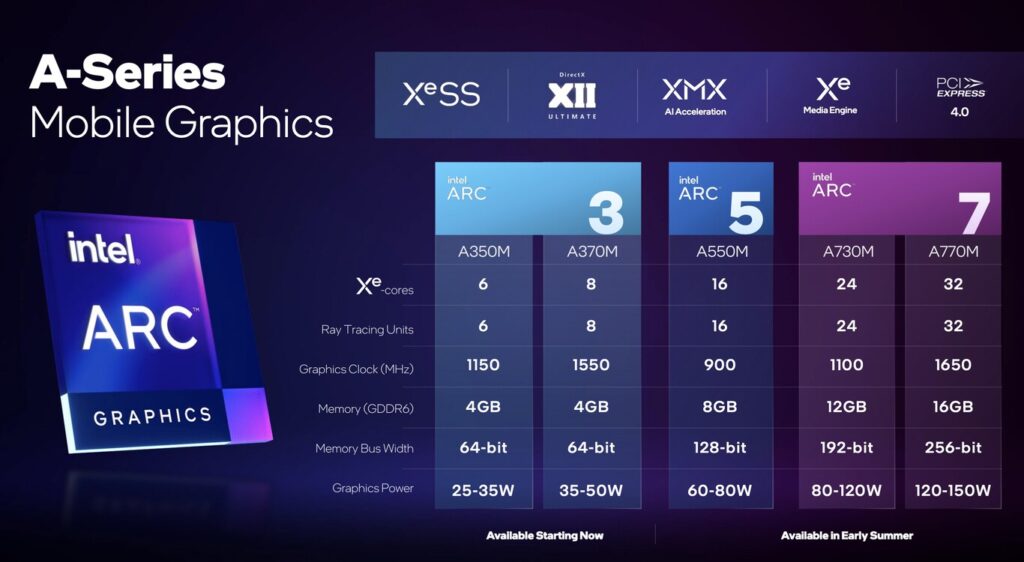
These graphics cards, whose development began years ago, feature DirectX 12 support, hardware ray tracing, and a power that, at least in the case of these first available models, the A350M and A370M chips, is double that offered by the integrated Intel Xe chips.
These first two models are the most modest of the family: they have 6 and 8 Xe cores respectively, and 6 and 8 ray tracing units. Power consumption ranges from 25 to 50 W, and they are intended for ultraportables and not so much for gaming laptops.
This type of equipment will arrive somewhat later, in summer. That is when the Intel Arc A550M, A730M, and A770M chips will enter the scene. The latter is by far the most powerful: it has 32 Xe cores, 32 ray-tracing units, and 16 GB of video memory, plus a 256-bit bus that will undoubtedly put that memory and those cores to work at full capacity.
We will also have to wait until the summer to see XeSS technology in action: it is the alternative to NVIDIA DLSS and AMD FSR and will make it possible to offer an anti-aliasing technique that improves image definition without compromising fluidity and frame rate.
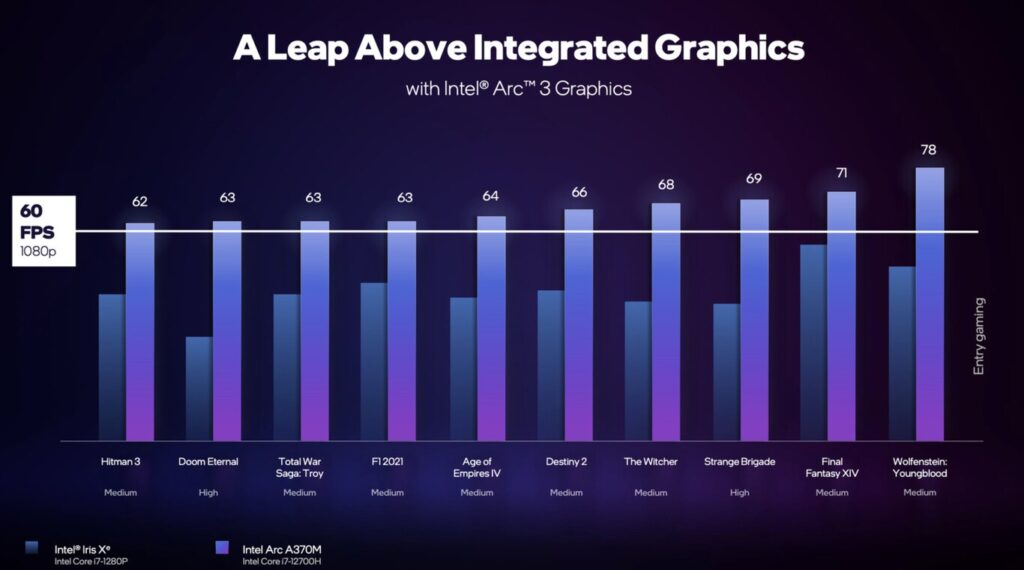
Intel’s promise with these modest graphics cards is to ensure that we can play at 1080p and 60 FPS smoothly in a wide selection of games. Not the most demanding games, of course, but popular games that will be remarkably enjoyable even on ultraportables that are not specifically geared for gaming.
In some cases, it will even be possible to play competitive titles such as Fortnite, Valorant, or GTA V at 90 FPS without apparent problems, and that performance is superior to that offered by the best Iris Xe chips that we have seen so far in some laptops.
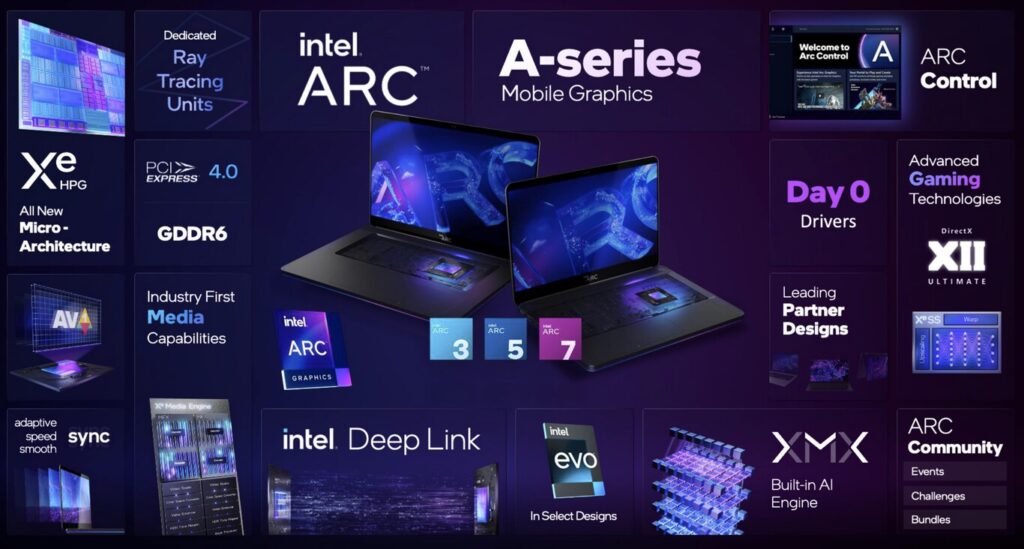
There is another remarkable element in these graphics cards, and that is their commitment to content creation. Its cores dedicated to the field of artificial intelligence will make it possible to gain a lot thanks to XMX technology.
The idea here is to promote processes such as those used in video editing programs, but also to help streamers to offer higher quality broadcasts even on equipment with these less demanding models.
Intel boasted about how these are the first dedicated graphics cards with hardware encoding and decoding support for the AV1 codec, which is the promising royalty-free alternative to the current H.264 and HEVC codecs.
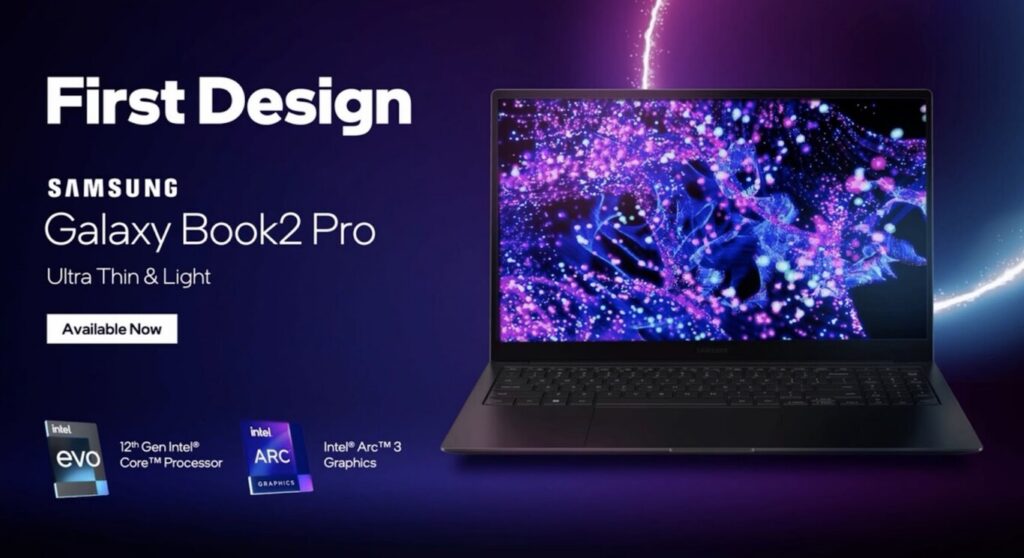
Deep Link technology is another component that will help these solutions deliver maximum performance: the processor and graphics card work more closely together than ever before to optimize power consumption, among other things.
The first device to be equipped with one of these Intel solutions is the Samsung Galaxy Book2 Pro, but more models from all kinds of manufacturers will soon follow. The computers will start at $899, but as we have said, they are just the beginning of a new era for Intel: one that offers a real alternative (albeit modest for the moment, we insist) to the proposals of NVIDIA and AMD.
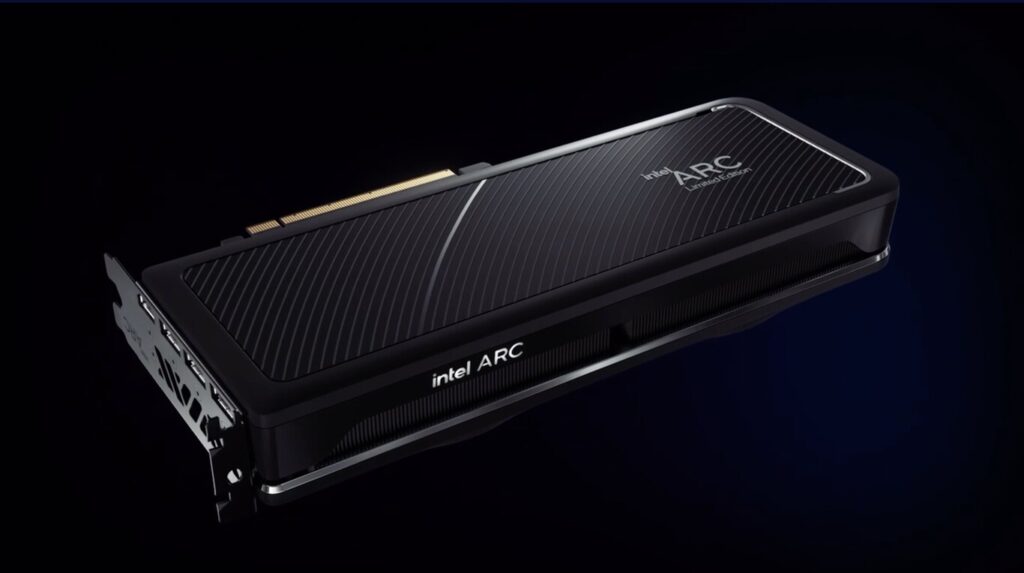
Intel ended with an even more promising announcement: that of the future Intel ARC dedicated graphics cards for desktop PCs, which will also arrive in the summer and will undoubtedly be particularly striking.
We will then be able to assess whether Intel Arc is indeed a viable alternative to NVIDIA or AMD graphics cards. Rumors suggest that for now, they will not be able to compete with the best of these manufacturers, but also reveal that we could be facing a worthy competitor to the GeForce RTX 3070.
So, very good news for all gamers, who will soon have one more option on the market. Hopefully, all this will help alleviate a situation – getting a high-end graphics card at decent prices is still difficult – that has been dragging on for far too long.
This post may contain affiliate links, which means that I may receive a commission if you make a purchase using these links. As an Amazon Associate, I earn from qualifying purchases.

